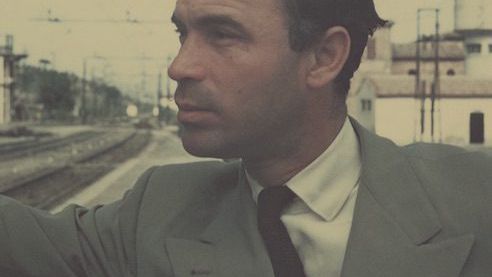

The gentleman icon: Porfirio Rubirosa
Words: Alex Woodhall
The playboys of today lack a certain gravitas of their counterparts of yesteryear. The Dan Bilzerians, Travis Beynons and Scott Disicks of the world couldn’t hold a candle to the likes of Gunter Sachs, Prince Aly Khan, Alfonso de Portago and, most of all, Porfirio Rubirosa. These gentlemen signified a time when playboy was a badge of honour, not a less harsh play on misogynist, nor a mass-market branding of a bunny.
These hedonists of yesteryear stayed true to the mantra of live fast, die young — although miraculously, some survived the untimely grave. Frequenting exclusive locale, charming the world’s most beautiful women, driving the finest, fastest cars and dressing to impress at every opportunity. Arbiters of taste, when they spoke people listened, and when they entered a room people looked. Today’s crop on the other hand are fuelled by social media and gaudy excess, a vulgar ostentatiousness that’s espoused straight from an early millennia rap video. Their fame as fickle as the women in their bed, men who won’t be remembered much longer than their 10-second Snapchat stories.
Porfirio Rubirosa, by comparison, remains an eternal icon of his era, a symbol of 60s epicureanism and a name held hallow. He was said to have inspired parts of Fleming’s Bond, his prowess in the bedroom has become something of a legend; he was a pilot, a racing driver, a polo player and, if rumours are true, a spy and assassin — in all but name at least.
He was the ultimate bon vivant, a man’s man in a fundamentally machismo world. Serving as a diplomat for his barbarous father-in-law, the dictator Rafael Trujillo, he peregrinated across Europe: Berlin, Paris and the like, exchanging political killings for a jet-set lifestyle — or so the FBI believed.
Rubi, as his friends called him, courted affection from anyone who brushed his vicinity, a magnetism that was seemingly unbound. His divorce from his first wife Flor had little influence on his relationship with Trujillo, the latter’s affection for him unwavering in the face of the breakdown of his relationship with his daughter:
“He is good at his job, because women like him and he is a wonderful liar.”
Rubirosa managed five marriages in total, none lasting more than a decade. Among his wives were two of the richest women in the world, and he’s rumoured to have had affairs with thousands of others: including dalliances with Dolores del Río, Eartha Kitt, Marilyn Monroe, Ava Gardner, Rita Hayworth, Joan Crawford and Zsa Zsa Gabor. He may have been a diplomat by contract, but women were his true profession.
He spent two hours teaching Sammy Davis Jr. how to kiss a woman’s hand correctly. His eight-week marriage to Barbara Hutton cost her $65,000 a day. His chivalry was relentless, he made every woman feel like she was the only one in the world, despite a reputation that preceeded him. His much-talked about physical endowment inspired Parisian waiters to dub the comically large pepper grinders “Rubis” in his honour.
His escapades often stirred up notoriety and bred tales across the continent. His infamy building as such that on occasion, Trujillo would dismiss him and order him to a different country. The brutish dictator, however, refused to cut ties with his once son-in-law, recognising his abilities and deeming him too valuable. Making yourself indispensable to a man who was responsible for an estimated 50,000 deaths is a remarkable achievement in itself.
In truth, Rubi rarely managed a day’s work in his life. He was said to have raised at noon, likely have been out until ungodly hours the night before, spent an hour on a vigorous, methodical grooming routine before taking one of his many Ferraris to the polo club. He took pride in his appearance, spending time and money on it to the finest detail. You’d expect his suits to be bespoke and his shoes handmade, but even his underwear was cut and measured in Savile Row. His real passions post-war though were cars and polo, sports he indulged in at his wives’ expense. His proficiency on the polo field matched that of his capability in the bedroom, whilst when it came to cars, he raced in two 24 Hours of Le Mans, although did not finish, and was cruelly robbed of his chance to race in an Formula One grand prix due to illness.
Rather fittingly then, his death came at the wheel of a his silver Ferrari 250 GT. After leaving famed nightclub Jimmy’z at 8am after an all-night celebration for winning the polo Coupe de France, in his drunken stupor he hit a horse chestnut tree and died in the ambulance, aged 56.
Whilst it’s easy to look back in reverence, today Rubi would be pilloried, his debauchery firmly against the grain in a post fourth-wave world, and rightly so. But for his era and for the case of nostalgia he’s a bona fide icon. His zest for life, hedonism and faultless taste something every gentleman can take from. Fortunately his legacy lives on in the form of a name-sake brand that embodies the better parts of who Rubirosa was and how he lived.
Visit Rubirosa for more.


